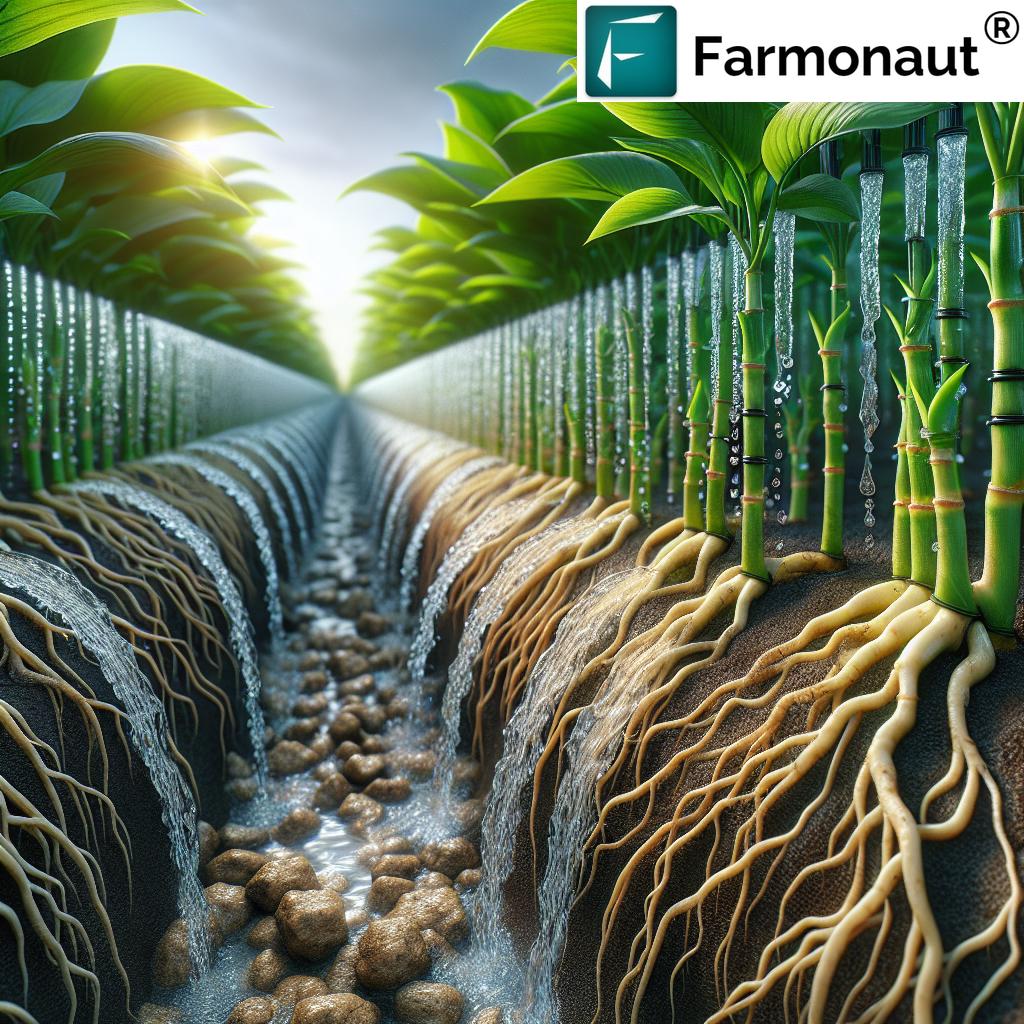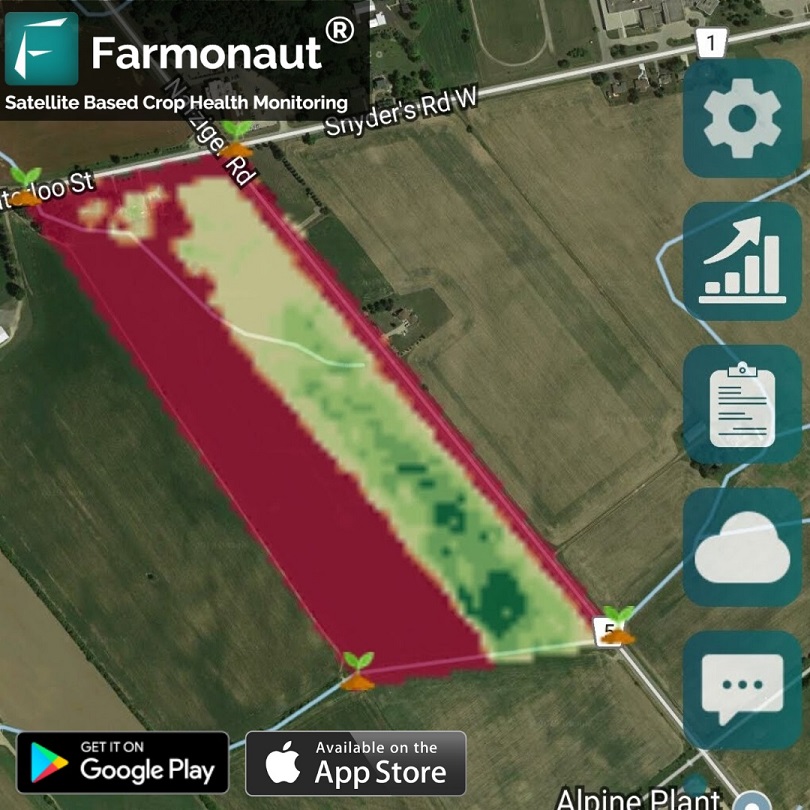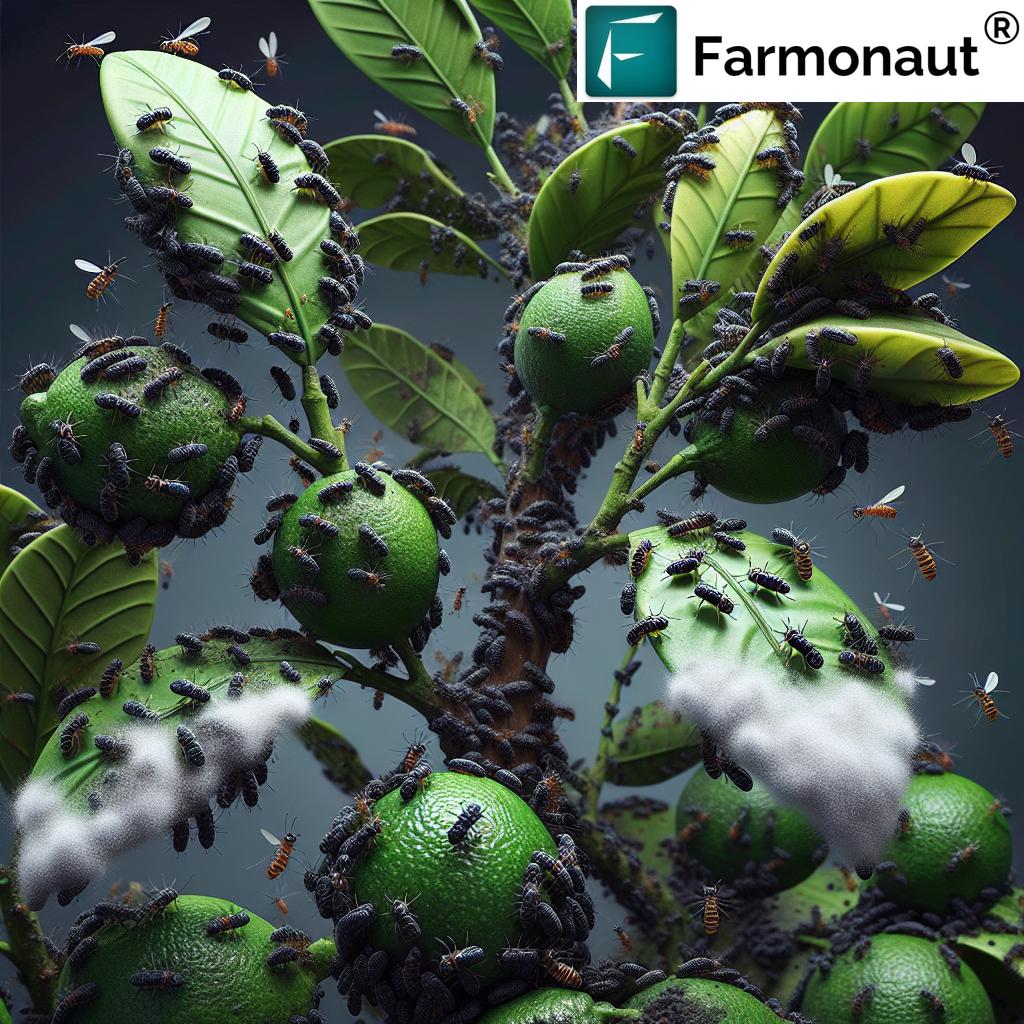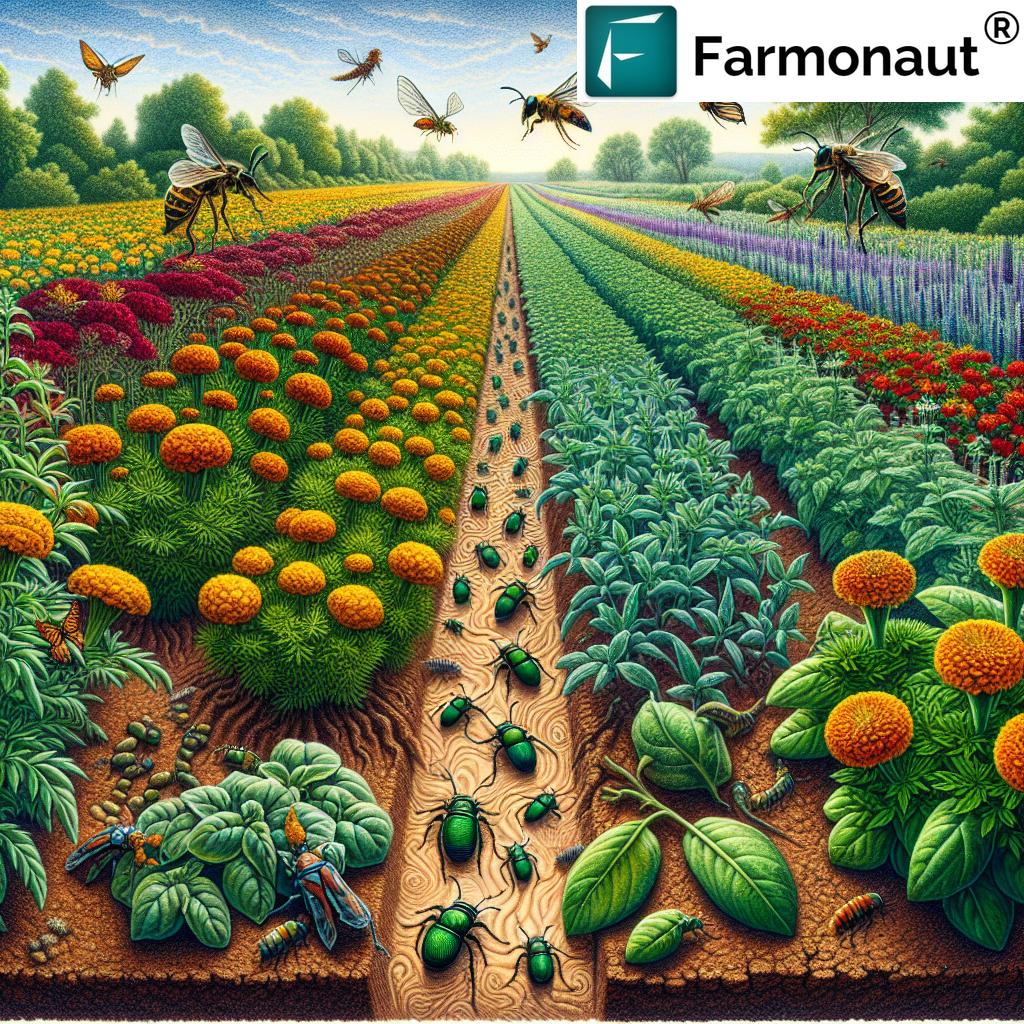Which Process Is Involved in Growing Crops: 7 Steps to Maximize Yields
Table of Contents
- Introduction: The Science and Art of Crop Production
- Trivia: Modern Yield and Water Efficiency
- Step 1: Soil Preparation – Building the Foundation
- Step 2: Seed Selection and Sowing – Laying the Groundwork
- Step 3: Irrigation – Ensuring Vital Water Supply
- Step 4: Nutrient Management in Crops
- Step 5: Pest and Disease Control – Safeguarding Growth
- Step 6: Harvesting – Reaping the Rewards
- Step 7: Modern Advancements and Sustainable Crop Production
- Innovative Crop Management: Step-by-Step Process Comparison Table
- FAQs on Crop Production and Management
- Conclusion: Integrating Technology for Sustainable Yields
- Farmonaut Subscriptions
Introduction: The Science and Art of Crop Production and Management
Growing crops is a multifaceted journey encompassing scientific understanding, technological advancements, and a deep connection to our land. At the heart of agriculture lies the intricate process of crop production and management, which involves multiple precise steps. These steps—soil preparation, seed selection and sowing, irrigation, nutrient management, pest and disease control, harvesting, and leveraging modern innovations—are the backbone of sustainable and high-yield food production.
As we explore each stage involved in cultivating crops, we embrace both traditional wisdom and breakthrough technologies. Today, companies like Farmonaut empower us with real-time satellite data, AI advisories, and blockchain-based traceability, making precision agriculture accessible to all. Let’s discover how integrating these proven steps and modern tools can transform resource use, enhance crop quality, and contribute to global food security.
“Modern precision agriculture can increase crop yields by up to 20% through optimized soil preparation and irrigation techniques.”
Step 1: Soil Preparation – Building the Foundation for Optimal Crop Growth
Why Soil Preparation Techniques Matter
Soil preparation is the keystone of productive crop cultivation. The journey to achieving higher yields and ensuring robust plant health begins with thorough and strategic treatment of the land. This stage elevates soil structure, boosts its fertility, and creates an optimal environment for root development and seed germination.
- Tillage: By using implements like plows and harrows, we loosen and turn the soil. This process helps break compact soil layers, enhances aeration, and facilitates moisture penetration, which is vital for emerging seedlings.
- Incorporating Organic Matter: Adding compost or manure enriches the soil with essential nutrients, improves microbial activity, and promotes lasting fertility.
- Addressing Soil Conditions: Regular soil testing identifies deficiencies—allowing us to correct pH, saline, or compaction issues before planting begins.
Advanced soil preparation techniques are now more accessible with satellite monitoring solutions like Farmonaut’s Crop Plantation and Forest Advisory App. By analyzing soil moisture levels and vegetation indices via satellite, we can time tillage and amendments more efficiently for sustained productivity.
Step 2: Seed Selection and Sowing Methods – Establishing a Strong Foundation
The Role of Seed Selection in Crop Production and Management
The choice and management of seeds define the ultimate yield and quality of crops. Seed selection and sowing methods must be tailored to local conditions, anticipated disease resistance, and target market preferences.
- Varietal Selection: Selecting high-quality, disease-resistant varieties increases plant health and adaptation to the region’s temperature, moisture, and soil types.
- Seed Sourcing: Sourcing from reputable suppliers ensures strong germination rates and reduces risks from contaminated or aged seed stock.
-
Sowing Techniques:
- Broadcasting: Evenly spreading seeds, typical for rice or pasture crops.
- Drilling: Using modern drills for more precise spacing and seed placement.
- Transplanting: Starting seeds in controlled beds and moving seedlings to the field for crops like tomato and paddy.
- Critical Sowing Factors: The timing of planting should match optimal temperature and moisture availability for the chosen crop type.
Satellite-powered tools from Farmonaut help us monitor soil moisture and temperature remotely, guiding our decisions on sowing time and seed placement for improved germination and yields.
Did you know? You can now ensure your produce’s authenticity from sowing to shelf! Explore Farmonaut’s product traceability solutions powered by blockchain—your pathway to trustworthy, transparent supply chains.
“Controlled-environment farming uses up to 90% less water than traditional methods, revolutionizing sustainable crop production.”
Step 3: Irrigation Systems for Agriculture – Ensuring Vital Water Supply
Water Management Strategies for Sustainable Crop Cultivation
Water is indispensable for plant growth. In many regions where rainfall is unpredictable or insufficient, we rely on irrigation systems for agriculture to ensure stable production. Irrigation methods impact not only resource efficiency but also crop quality and yield.
- Surface Irrigation: Traditional flood irrigation delivers water across fields. While simple, it can be wasteful and less suitable for water-scarce regions.
- Sprinkler Systems: Sprinkler techniques distribute water more uniformly, making them fit for delicate crop types.
- Drip Irrigation: Delivers water directly to roots, minimizing losses due to evaporation and runoff. Drip irrigation can save up to 30% more water compared to traditional methods.
Farmonaut’s satellite-based platform assesses soil moisture in real-time, helping us optimize irrigation schedules and minimize water waste. For advanced irrigation and resource management, visit Farmonaut’s large scale farm management solutions.
Are you a developer or agri-tech business? Integrate satellite, soil, and weather data into your systems via the Farmonaut API and API Developer Docs for superior resource planning and decision support!
Step 4: Nutrient Management in Crops – Enhancing Crop Health and Yields
The Science of Meeting Plant Nutrient Requirements
Every plant needs a balanced set of nutrients for vigorous growth, health, and high-quality yields. The availability of macronutrients (such as nitrogen, phosphorus, potassium), as well as micronutrients (iron, zinc), must be meticulously managed.
- Soil Testing: Identifies nutrient deficiencies, guides fertilizer application, and informs the use of organic amendments.
- Organic vs. Chemical Inputs: Blending organic matter (like compost and manure) improves soil quality, while targeted use of fertilizers remedies acute shortages.
- Application Methods: Fertilizer placement, foliar sprays, fertigation (via irrigation systems), and split applications improve efficiency and reduce losses.
Farmonaut leverages NDVI and satellite spectral indices to pinpoint nutrient stress in fields, empowering us to take timely remedial action and avoid overuse of chemical inputs. Ensuring optimal nutrient management in crops not only improves farm returns but also supports environmental sustainability.
Take action for the planet: Monitor and reduce your farm’s fertilizer-related emissions with Farmonaut’s carbon footprinting tools. Achieve agricultural sustainability and compliance while increasing productivity.
Step 5: Integrated Pest Management Strategies – Protecting Crops from Pests and Diseases
Holistic Management of Crop Threats for Higher Quality Yields
Pests, weeds, and pathogens can dramatically compromise crop yields and quality. Sustainable crop production and management hinges on integrated pest management strategies (IPM), which combine cultural, biological, and chemical methods.
- Cultural Practices: Use of crop rotation, resistant varieties, clean field conditions, and adjusted sowing times disrupts pest cycles.
- Biological Control: Leveraging natural predators, beneficial insects, or microbial antagonists to control pests and diseases without harming the environment.
- Chemical Control: Application of pesticides when necessary—preferably with precision targeting to reduce negative environmental impact.
Farmonaut’s AI-driven advisory system offers real-time alerts for disease outbreaks and pest pressure based on satellite images, allowing us to intervene early and efficiently. These innovations maintain crop health and minimize the reliance on chemical solutions.
Need crop or farm insurance? Get accurate crop health verification for fast, fraud-resistant claims with Farmonaut’s satellite-based crop loan and insurance services.
Step 6: Harvesting Practices for High Yields – Timing and Techniques
The Critical Final Stage of Crop Production and Management
Harvesting is the culmination of months of diligent crop management. The timing and methods used are critical to preserve quality, maximize yield, and minimize post-harvest losses.
- Optimal Timing: Each crop type has a distinct maturity index. Harvesting too early or too late can diminish both quality and market value.
- Techniques: Hand harvesting (grains, fruits, vegetables) and mechanized methods (combine harvesters) must be chosen according to field scale and labor availability.
- Post-Harvest Handling: Cleaning, sorting, grading, and proper storage methods are essential to maintain quality and extend shelf-life.
Satellite-based crop health monitoring from platforms like Farmonaut helps us anticipate optimal harvest windows, reducing labor costs and boosting profit margins.
Make your harvest logistics smarter: Effortlessly track and optimize fleets and machinery operations with Farmonaut’s fleet management solutions.
Step 7: Modern Farming Technologies – Innovation for Sustainable Crop Cultivation
Precision Agriculture, Controlled-Environment Farming & Data-Driven Decisions
The future of crop production and management lies in innovation, making sustainable crop cultivation possible on both small and large scales.
- Precision Agriculture: Leverages GPS, remote sensing, and AI to monitor and manage field variability. Tools like Farmonaut’s platform enable real-time crop monitoring, efficient fertilizer and water use, and targeted pest control—resulting in improved yields and resource efficiency.
- Controlled-Environment Agriculture (CEA): Employs greenhouses and vertical farming to regulate temperature, humidity, and light—allowing year-round crop production using up to 90% less water.
- Blockchain-Based Food Traceability: Securely documents every stage of the food journey from farm to table, reducing fraud and enhancing consumer trust.
- AI-Based Advisory: Custom recommendations based on satellite imagery and weather forecasts guide timely, data-driven farm decisions.
- Carbon Footprinting and Sustainability: Monitoring and reducing emissions ensures agricultural practices contribute positively to environmental goals. Farmonaut’s carbon tracking tools offer actionable insights.
By embracing these modern farming technologies, we can increase productivity, reduce resource waste, and secure the future of global food supplies.
Innovative Crop Management: Step-by-Step Process Comparison Table
The following table compares each essential step in crop production and management, highlighting the traditional approach alongside advanced, technology-driven practices for maximum yield and sustainability.
| Step | Process Description | Traditional Method | Innovative/Technological Method | Estimated Time/Resource Savings |
|---|---|---|---|---|
| 1 | Soil Preparation | Manual tilling, basic plows, animal/tractor-drawn harrows | Satellite-guided tilling, soil moisture sensors, smart scheduling via apps | 10–20% faster prep, 15% less soil compaction |
| 2 | Seed Selection & Sowing | Local seed varieties, manual broadcasting | High-germination certified seeds; precision seed drills; satellite-based moisture mapping | Increases germination by 10%; reduces seed loss by 25% |
| 3 | Irrigation | Flood irrigation, canals, manual control | Drip & sprinkler systems; remote soil moisture, automated irrigation control | 30%+ water saved, 20% yield increase possible |
| 4 | Nutrient Management | Uniform fertilizer application, basic composting | Precision nutrient application via NDVI, variable rate tech, AI fertilizer advisories | Reduces fertilizer waste by 18%; improves yield and crop quality |
| 5 | Pest & Disease Control | Scheduled spraying, manual inspections | Integrated Pest Management using AI alerts, satellite-based hotspot detection | 35% less pesticide used; 15% crop loss avoided |
| 6 | Harvesting | Manual labor, standard harvesting windows | Satellite-predicted best harvest date; machinery/fleet tracking solutions | Up to 25% faster harvest, higher market quality |
| 7 | Advanced Innovations | Limited environment control, generic recordkeeping | Controlled-Environment farming (CEA); blockchain traceability; carbon footprint monitoring | Up to 90% water saved (CEA); food safety enhanced; compliance simplified |
Frequently Asked Questions: Crop Production and Management
What are the most important stages in growing crops?
The seven critical stages are soil preparation, seed selection and sowing, irrigation, nutrient management, pest and disease control, harvesting, and the integration of modern technologies for better productivity and sustainability.
How does satellite-based crop monitoring improve yield?
By providing real-time insights into soil moisture, crop health (NDVI), and pest risk, satellite monitoring helps us make timely resource decisions—minimizing waste and maximizing harvests.
Which irrigation system is best for efficient water use?
Drip irrigation is the most water-efficient system, delivering water directly to plant roots and reducing evaporation. Linking drip systems with soil moisture data further improves timing and efficiency.
What is Integrated Pest Management (IPM)?
IPM combines cultural, biological, and chemical control strategies, aiming to protect crops while minimizing environmental harm and pesticide reliance.
How can I trace my crops from field to fork?
Using Farmonaut’s blockchain-based product traceability systems, every supply chain stage is verifiable and transparent, increasing buyer trust.
How does Farmonaut assist with sustainable crop cultivation?
Farmonaut combines satellite, AI, and blockchain to optimize resource use (carbon footprinting), increase yields, and ensure environmental compliance—empowering us for long-term sustainability.
Who can benefit from Farmonaut’s solutions?
Individual farmers, agribusinesses, cooperatives, governments, and corporates seeking data-driven crop management, transparent supply chains, and environmental accountability.
Conclusion: Integrating Technology and Insight for Sustainable Yields
Crop production and management is a dynamic process, shaped by centuries of agricultural knowledge and the rapid evolution of modern farming technologies. From the foundational soil preparation to advanced satellite-enabled decision-making, each step is crucial.
By systematically following the 7-step process—soil preparation techniques, seed selection and sowing methods, irrigation systems for agriculture, nutrient management in crops, integrated pest management strategies, harvesting practices for high yields, and embracing innovation—we can achieve optimal yields with responsible resource use.
As we face new challenges in food security and environmental stewardship, solutions like Farmonaut put actionable intelligence in our hands. Whether you’re managing a small plot or a large commercial operation, integrating data-driven insights ensures we meet both today’s and tomorrow’s food demands with sustainability and transparency.
Get Started with Farmonaut – Affordable Precision Agriculture for All
Ready to transform your crop production and management? Farmonaut offers flexible subscription plans for individual farmers, agri-cooperatives, government bodies, and corporates. Choose what fits your farm’s scale—from real-time monitoring and AI advisories to blockchain traceability and carbon tracking.













